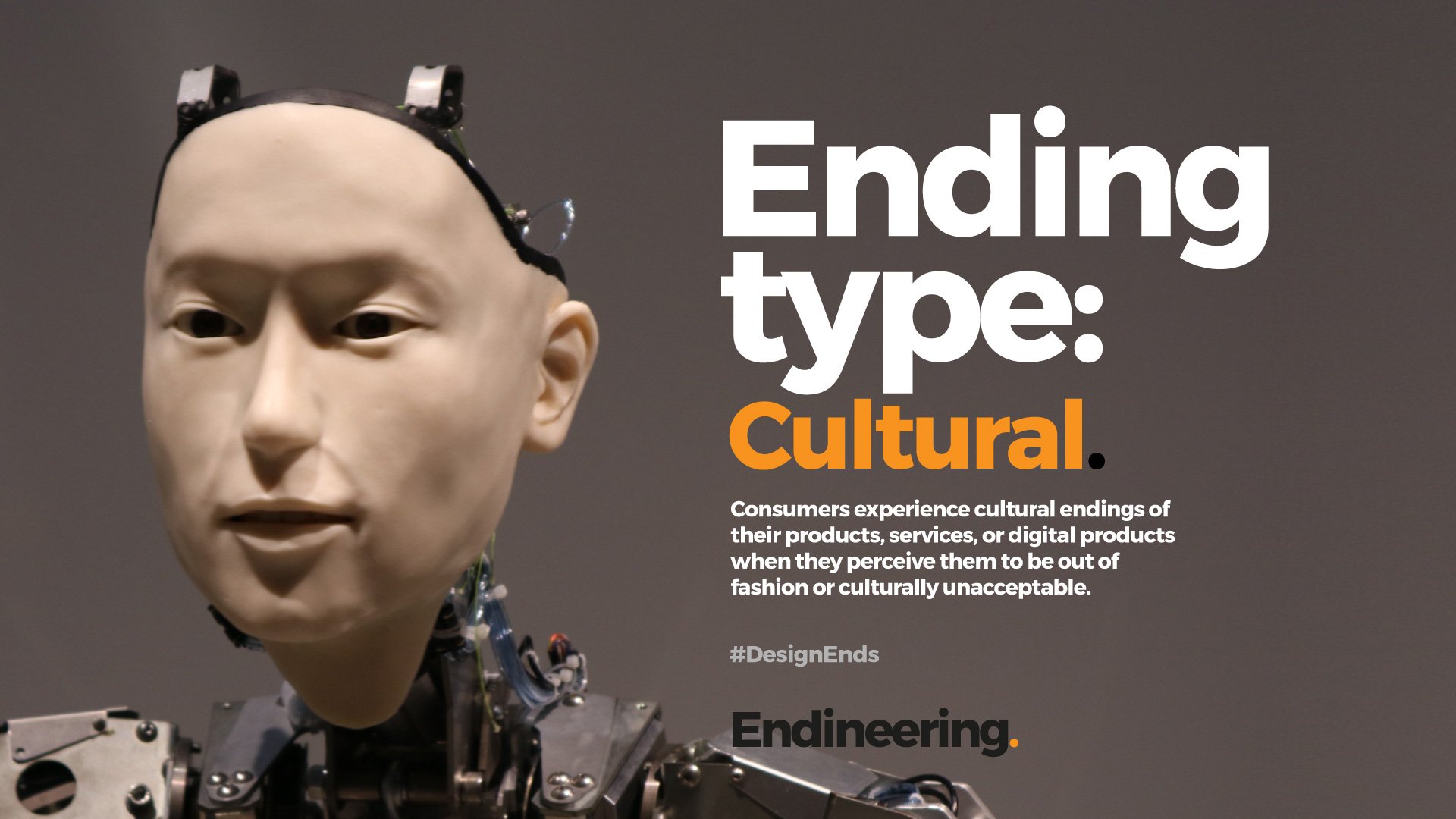
Ending Type: Exhaustion / Credit out
Services or products that are based on a finite or numeric value. Once that value is exhausted the service or product end.
Examples included: batteries being discharged, food being consumed, and tyres being run bald. In digital we can see examples of storage being filled up. A currency is common - Dollars, Pounds, Euros, for example. But it may also be represented by a pseudo currency, such as points or credits which have been created by the provider. Some national authorities use a points system such as points on your driving licence (UK) or 3 strikes law in the (US).
Services or products that are based on a finite or numeric value. Once that value is exhausted the service or product end.
Examples included: batteries being discharged, food being consumed, and tyres being run bald. In digital we can see examples of storage being filled up. A currency is common - Dollars, Pounds, Euros, for example. But it may also be represented by a pseudo currency, such as points or credits which have been created by the provider. Some national authorities use a points system such as points on your driving licence (UK) or 3 strikes law in the (US).
Currencies
The exhaustion of currency has characterised peoples’ perception of each other for thousands of years. Yet running out of money is common across cultures, race, class and genders. It is probably the most common ending consumers have ever experienced. It is a frequent source of conversations, purpose and exploitation.
In recent centuries pseudo currencies have been seen in loyalty programs. Copper coins were given out to loyal customers by stores to redeem later. Green Shield stamps were very well known in the 20th century. Box-top coupons were often integrated into the product and collected by customers. These locked the consumer into a system where they had to use the chosen pseudo currency of the brand. Once they’d run out, they were like any other consumers again. So, they were downgraded to normal and their loyalty was exhausted.
Physical exhaustion
Ice blocks were an early, tangible and visible system which ended clearly with wet exhaustion. In 1805, Frederic Tudor and his brother came up with a business proposal to ship ice to the West Indies so that people could enjoy a cold drink in the sun. Unsurprisingly, that idea failed. But with a pivot any start-up would be proud of, Frederic decided to sell ice to restaurants and bars instead. With a great deal of effort, he finally established, not only a business but a whole industry of shipping ice. By 1847, 52,000 tons of ice was being moved around the United States.
Industrialisation established brand specificity in consumer products. Where in previous centuries items were unbranded and defined by weight or size, new marketing and packaging changed this. The branded box increased the tangibility of the ending. From ‘We are running low on cereal.’ to ‘The box of Cornflakes is empty.’
Some products end when they are full. A full vacuum cleaner bag means that the consumer’s vacuum cleaner has a lack of suck when it has reached capacity. Bin bags have similar usage. And as consumerism fills our homes and exhausts our storage, we resort to off-site storage and start again.
Services
Service costs can be expensive and quickly exhaust a person’s custom with a company. A clear example can be seen in the US health care system. This becomes difficult for people to afford unless they have insurance cover. According to a recent study, 66.5 percent of all US personal bankruptcies were caused by medical costs. The report estimated that 530,000 families file for bankruptcy every year because of this. Savings are also quickly exhausted without proper cover. A further study by Bankrate, found only 40% of people could even afford a medical expense of $1000 from their savings.
Digitisation
In June of 2000, BT Cellnet launched the world’s first General Packet Radio Service, (GPRS). This moved billing from per-minute or second, to billing based on volume of data. This changed the consumers’ perception of the pseudo currency. Now they became aware of the exhaustion of data when it ran low. Translating how much data was needed to download a song became a common consumer perception related to the service ending.
Mana
In gaming, Mana has been used as a form of currency for decades. The term goes way back to indigenous people in the South Pacific who used the word to describe a magical force. In gameplay, gaining and losing Mana becomes a source of progression and purpose for the player. So, it is being used for casting magic spells and other game-world activities.
Planning
If there is an inaccurate representation of credit, people get caught out. Fuel gauges are a good example, especially those that estimate the remaining distance. If the consumer drives fast and inefficiently, the remaining distance specified becomes different. This undermines trust in the representation of the currency (fuel). Consumers with electric cars need to plan far more than regular fuel drivers. This is due to the lack of charging stations, the length of charging and the limited range of the charge. Risks like this provide an enormous incentive to plan the exhaustion of your battery.
Ending Type: Cultural
Cultural ending: Consumers experience cultural endings of their products, services, or digital products when they perceive them to be out of fashion or culturally unacceptable.
Cultural ending: Consumers experience cultural endings of their products, services, or digital products when they perceive them to be out of fashion or culturally unacceptable.
This could be a service that was previously considered fantastic, but now feels wrong due to social perceptions or a particular look or feel. It could be a product that has a physical style or colour palette that has become less attractive. The problem might be a deeper, socially unpalatable point of view about race, gender, or the behaviour of company directors. A whole range of inappropriate points of view can bring an end to product, service, or digital products.
Usually cultural change is historically slow, steeped in generational differences in attitude. In recent decades such change has moved faster as a result of digital communication amongst other things. Many argue that social media has fuelled this acceleration. Some examples of cultural endings can be quite clear and strongly felt. Other examples like fashion or style are more nuanced and subjective.
Uncanny valley
A more human gauge of tolerance is demonstrated in the ‘uncanny valley’. First proposed by the robotics professor Masahiro Mori. He suggested ‘As the appearance of a robot is made more human, some observers’ emotional response to the robot becomes increasingly positive and empathetic, until it reaches a point beyond which the response quickly becomes strong revulsion'.
In the last few months people on Twitter having been experiencing a cultural type of ending. Some would say that cracks have been building for years as Twitter became an increasingly vocal place for people to spread hate. These cracks opened further with the acquisition of the platform by Elon Musk. His ego centric persona and erratic leadership style have led many to feel the platform has culturally shifted. Changing the brand too far for some people and businesses. In essence a cultural ending has taken place on Twitter for many.
Understanding the different types of ending helps businesses and product developers appreciate the experience a consumer is going through. In turn this helps a business create better off-boardings and endings from the their product.
Find out more about Ending Types in the Endineering book.
Or on the Endineering course.


